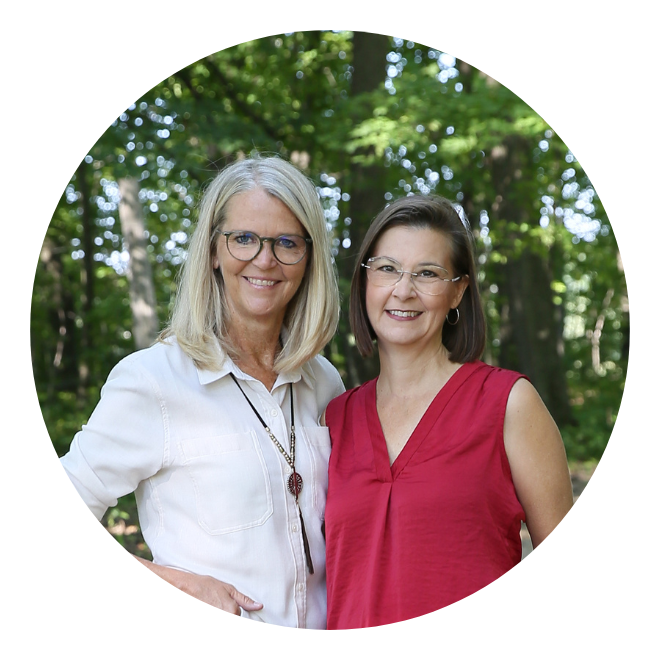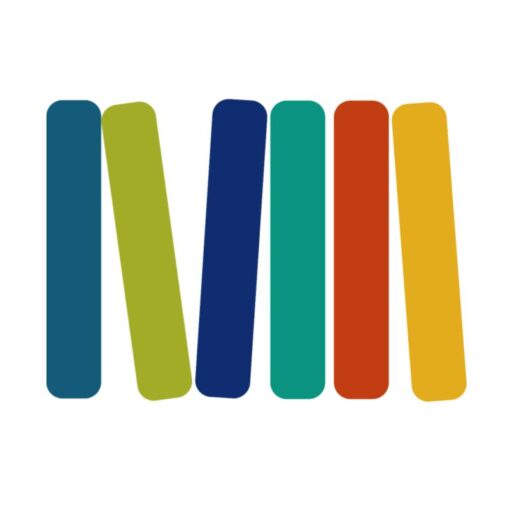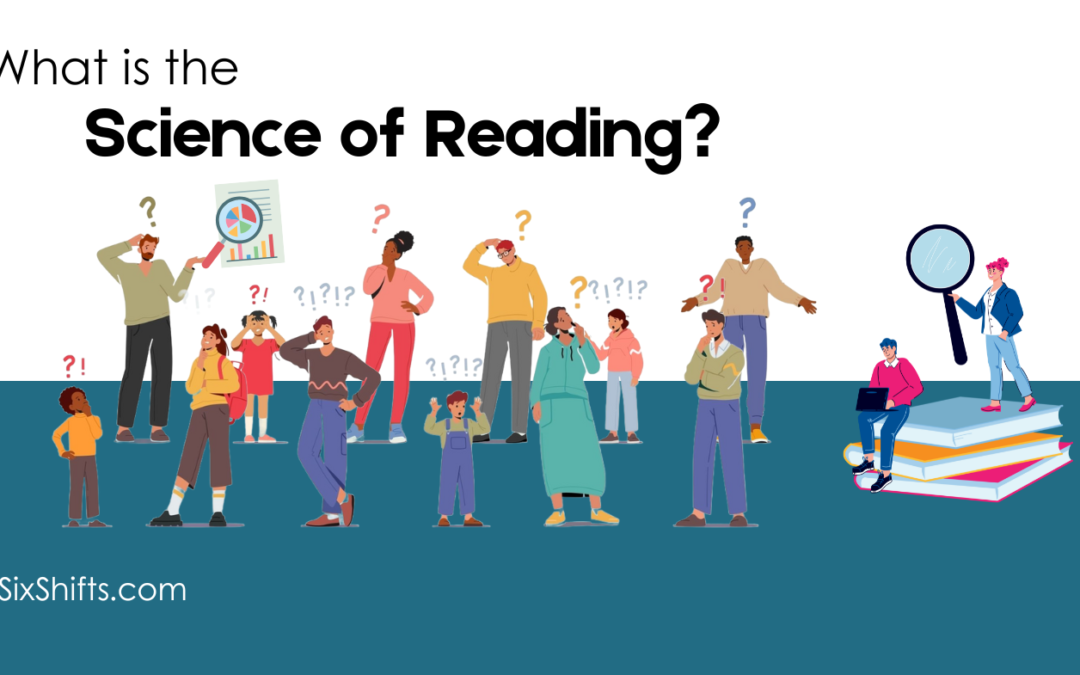You may be just starting to explore the body of research known as the science of reading, looking for practical ways to bring it into your classroom.
Or, maybe you’ve already embraced brain-friendly practices and find yourself wishing everyone else would catch up.
Perhaps you’ve been a strong advocate for updated literacy practices in your district for some time and are relieved to find more support for your efforts.
Or, perhaps you are concerned about some of the suggested changes to practice and find yourself holding tight to tried-and-true methods that others seem ready to abandon.
Wherever you are on your journey, we tip our hats to you. Reflecting on current practices with an eye toward meaningful shifts takes intentionality and courage.
Shifting the Balance to the Science of Reading
Three years after publishing Shifting the Balance: Bringing the Science of Reading into the Balanced Literacy Classroom (Stenhouse, 2021), the topic continues to make headlines and stir strong emotions among educators and parents. And more and more, the science of reading is a regular topic of discussion between school board members, state legislators, school administrators, and parents. We’ve even heard of real estate agents identifying whether a neighborhood school “uses” the science of reading or not.
Including the term the Science of Reading in our book’s title felt like a big decision at the time. As balanced literacy educators, we had supported many of the practices that had come under scrutiny. But we recognized that some shifts in those practices could make learning to read easier for students and that the labels “balanced literacy” and “the science of reading”–however imprecise–would be necessary for the honest conversations we needed to have with educators.
Years later, after working with educators worldwide, our views on the science of reading—what it is and what it means—have evolved. Likely, yours have, too. Our full-time passion now is translating literacy research into practical, high-impact teaching practices that make it easier for the human brain to become skilled at reading and writing.
What Is the Science of Reading? An Evolving Conversation
While the term has been around for a while, the conversation continues to expand—sometimes providing clarity, sometimes creating more confusion. We’re at a point in literacy history where there’s widespread discussion but mixed understanding of what the science of reading truly is.
The science of reading is a body of quantitative research that, when applied thoughtfully, makes learning to read and write easier for children—and teaching easier for educators. In other words, it is research that supports brain-friendly literacy instruction.
The Underpinnings of the Science of Reading
The science of reading is grounded in scientific research from a wide array of fields, including cognitive and behavioral psychology, linguistics, neuroscience, and more. Given its broad scope–and some types of research generally excluded from the term–some argue that “the sciences of reading” (plural) might be more accurate. Either way, at its core, this research helps us understand how the brain learns to read and write, offering evidence-based practices for literacy instruction.
This science highlights what teacher actions or instructional strategies make it easier (or harder) for children to experience reading and writing success. It sheds light on the cognitive processes children use when learning to read and write and provides valuable insights into how different teaching methods affect outcomes, for better or for worse.
Outside-In vs. Inside-Out Instructional Practices
As it turns out, many of the brain’s processes for acquiring a written code to represent spoken language are not obvious by just watching a child decode a word or by simply listening to them explain their thinking as they work to comprehend. In fact, many past observations—made from outside of the brain—have been misleading, although they seem logical, intuitive, even obvious. But, what is actually going on in the brain while it learns to read is quite different on the inside than it appears to an outside observer. This outside-in vs. inside-out perspective was introduced to us in Marilyn Jager Adams’s classic book, Beginning to Read: Thinking and Learning About Print (1990).
So, the science of reading offers us a body of knowledge that helps us know what to include and what to exclude from our instruction so that we make learning to read as easy as possible. Our best reading instruction is brain-friendly, or intentionally aligned, to provide what the brain needs for this particular learning. Brain-friendliness means the exclusion of certain practices, such as teaching children to memorize words visually or teaching children to rely on pictures to “solve words” rather than decode them. Just as importantly, it means adopting others, such as intentional knowledge-building and teaching vocabulary explicitly.
And while research is ongoing and its interpretation is nuanced, we continue to recognize that ignoring research findings would be a mistake, and children would bear the brunt of that mistake. So, we continue to support each other and the educators we serve, as we all do the emotional work that comes along with making substantive changes to how we teach reading and writing—work that is more than a job but part of who we all are.
But the science of reading isn’t just about what needs to change. It can also help you affirm or adjust some existing practices, such as strengthening language comprehension by reading aloud to students from texts beyond their reading level and making lots of space for classroom conversations. So connecting classroom practices to empirical research—those inside-out understandings that anchor your teaching in the science of how the human brain learns to read—can help you know what to keep, what to eliminate, and what to tweak in your literacy instruction.
Common Problems With Translating The Science of Reading Into Classroom Practice
But, interpreting empirical science has its complications. And making sweeping changes to literacy practices—even when they are based on science—is bound to introduce some new, unexpected challenges.
As we spend time in classrooms and work with school leaders, we see earnest efforts to respond to the pressure educators feel to “implement” the science of reading. These efforts play out in ways that often introduce new and different problems in place of the original problem that we’re trying to solve.
Three widespread complications that educators face during this implementation are confirmation bias, overcorrection, and one-size-fits-all instruction.
1. Confirmation Bias
We are all vulnerable to confirmation bias, or the tendency to look for evidence that supports what we believe already, while simultaneously overlooking evidence that disagrees with us. Our brains can only pay direct attention to one thing at a time, and we usually choose to focus on what makes us feel good about what we have already chosen. Of course, this means that we overlook gaps in our practices, sometimes even when they are glaring.
Here are some examples of what confirmation bias may look like:
- Deciding what you believe about literacy instruction and then looking for research that supports it, rather than reading research objectively
- Overlooking the design flaws in research that supports our thinking while we criticize contradictory research for lesser design problems
- Finding one small reason to disagree with every aspect of an idea, rather than assuming that every approach has drawbacks and we can mitigate risks for our learners if we assume that even the ways we love to teach aren’t perfect
2. Overcorrection and the Science of Reading
One major challenge in leveraging the science of reading is the risk of overcorrection. Pendulum swings have long plagued the literacy education community. We liken this to the “Vitamin C Problem.” Just as correcting a Vitamin C deficiency by consuming only citrus will cause new health issues, focusing exclusively on explicit decoding instruction— without similar effort to build knowledge and language comprehension— puts us at risk of producing a generation of skilled word readers who lack the language comprehension to understand what they are reading.
Here are some examples of overcorrection at work:
- Literacy centers or independent work that is focused only on one aspect of learning to read, such as only phonics practice in isolation
- Minimizing interactive read-aloud in order to have more time for whole-class, explicit phonics instruction
- Eliminating classroom libraries altogether so we can control everything a child tries to read
- Overlooking the power of self-teaching and trying to explicitly teach everything children are supposed to learn
3. One-Size-Fits-All Approaches to Interpreting the Science of Reading
Another roadblock to successfully leveraging reading science is designing our new practices as one-size-fits-all. With the increase in commercial programs as a curricular tool, there seems to be less differentiation happening.
Here are some examples of a one-size-fits-all approach:
- Setting the pace of the whole classroom to align with the pace the children with large gaps need
- While some may need lots of extra decoding instruction and practice, giving every student the same volume of explicit instruction and that same learning pace can hinder the overall reading development of students who can acquire foundational skills with less repetition and practice. Relying almost exclusively on screeners or more summative assessments without being intentional about collecting formative data
- All third-grade students receiving daily whole class instruction in phonemic awareness because the district has adopted a phonemic awareness program
Embracing Change for Better Student Outcomes
At first, holding current practices up to the lens of science might feel overwhelming, but ultimately, it’s an opportunity ripe with potential for students. Better aligning our teaching practices with scientific research can make reading and writing instruction more effective and accessible for all students.
This era of literacy education is actually one to celebrate because we now have access to better information about how children learn to read.
With engaging, responsive teaching that considers language comprehension, word reading, and reading comprehension—not to mention engagement, joyful experiences with text, and building relationships with children—you can help more children than ever unlock the power of meaningful reading experiences.
For a deeper dive into how brain-friendly literacy practices can transform your reading and writing instruction, explore our Shifting the Balance books and online courses, which offer practical, easy-to-implement strategies based on the science of reading.
References
Adams, M. J. (1990). Beginning to read: Thinking and learning about print. MIT Press.
-

Jan Burkins and Kari Yates are authors, speakers, and consultants, who are dedicated to helping teachers around the world translate reading science into simple instructional moves that help teachers make learning to read easier for their students while still centering meaning-making, engagement, and joy.
Recent Posts



I was FIRMLY anti-SOR when I first heard of your book. In fact, I read it to see what “traitors” you were for “leaving” balanced literacy instruction, and I looked for evidence of just jumping on the SOR bandwagon to be popular. I certainly had confirmation bias. I always say just like the game six degrees of Kevin Bacon, I’m two degrees of Ken and Yetta, because several of my main professors in my Master’s program studied directly under Ken and Yetta Goodman (the founders of whole language philosophy for those who may be wondering), so my whole language/balanced literacy roots run deep for sure. But then I actually read your book, and now, not only do I understand what best practice looks like, I consider it in my Top 5 education books of all time, and I have been at this teaching thing for 30 years now. So you definitely can teach an old dog new tricks! 😊
Once again, your words in this blog post have said exactly what needs to be said about current literacy instruction. Forever grateful I found your work and I am so grateful for all you do!
Michelle,
We appreciate your vulnerability and openness to explore shifts to practice. We’re grateful for the work you put into the world on behalf of children!
Kari and Jan
As always, excellent advice. Most of what the majority of what teachers were already doing was excellent. There was never a need to throw the baby out with the bath water, yet that’s exactly what’s happening in far too many schools, districts, and states, Thank you, as always, for your unwaveringly sound reasoning,
Overcorrection is a real danger. Ultimately the sweet spot requires balance – despite the unpopularity of the term. 🙂
Thank you for this post. I deeply appreciate your brave and bold commitment to bringing the Science of Reading to the forefront. As a former balanced literacy teacher, I began learning about the Science of Reading in 2021, and Shifting the Balance played a major role in helping me rethink and reshape my instruction. Your online class was also pivotal in my journey—it provided the practical tools and clarity I needed to make meaningful changes.
I also appreciate the compassion you show throughout this work—the way you acknowledge the emotional weight of change and support teachers without judgment. It’s clear you understand that this journey isn’t just about shifting practices, but about navigating the very real feelings that come with it.
I continue to share what I’ve learned with colleagues in my school and district, hoping to inspire others to explore this important work. Thank you for leading the way with such courage & clarity,
Dani, it’s an honor to have educators like you join us on the journey. You are our inspiration. Together we are all stronger, braver, and wiser.
Kari and Jan